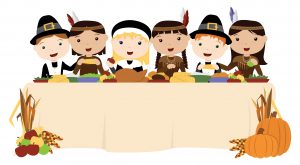Exploring the First Thanksgiving & Oral Hygiene of the Time
November 4, 2021

While historical records are spotty on the exact details, it is believed the first Thanksgiving may have occurred 400 years ago in the fall of 1621. Approximately 90 Wampanoag Native Americans gathered with 53 Pilgrims for a feast that supposedly lasted three days. Imagine deciding after two days of feasting that another day was needed!
Anyhow, some things have certainly changed about the modern Thanksgiving. For one, lobster isn’t a common modern Thanksgiving item as it was back then. What about the oral hygiene practiced in those days? It was, in fact, a thing in the 1600s. Read on to learn about the diets and toothcare habits of the attendees at the first Thanksgiving.
Natural Diet of the Wampanoag People
Expert hunters and gatherers, these people were able to live entirely off the land. Their diet primarily consisted of maize (corn), beans, squash, fish, and other catches from the sea, as well as game such as venison. The Native Americans usually didn’t incorporate the spices that were more prominent in Europe.
They ate a lot of fresh fruit and nuts, which helped keep plaque off their teeth. With a fresh diet that was high in fiber, the Wampanoag people had impressively well-maintained teeth and gums for that time period.
Toothcare in Nature
Native Americans cleaned their teeth and gums by chewing on fresh herbs. Sage, cucacua, and mint freshened their breath.
They also used chewsticks. These twigs had one end frayed by a rock that was used for brushing, while the other end was sharpened for use as a toothpick. They chewed on the frayed end to clean debris from their teeth.
Native Americans were also known to chew on pine needles to remove debris.
Pilgrims and Their Preserved Food
In order to survive their 66-day voyage from England to America, Pilgrims stocked their ships with salted dried meat, dried fruit, and hardtack – a dried biscuit similar to a saltine cracker. These are terrible foods for teeth, particularly the last two, as they easily adhere to enamel and fuel cavity-causing oral bacteria.
Since water distillation was not perfected yet, sailors of the time couldn’t drink much water without risking sickness and death. So, the primary beverages onboard were beer and wine. Wine is highly acidic and stains teeth, which sets the stage for cavities without brushing and rinsing, which the Pilgrims were not doing.
Primitive Toothbrushes for Settlers
While the Native Americans had their effective version of a toothbrush, it was not a common tool among Pilgrims. Toothbrushes of the time were made with a bone handle and bristles created from hog’s hair, not to mention the fact that they were mostly used by upper-class society and not sailors.
Add it all up and the Wampanoag people had the better teeth at the first Thanksgiving by a wide margin. It makes sense, considering the Pilgrims didn’t even have regular access to clean drinking water until their transatlantic journey was over.
Fortunately, you and your family have a better awareness of the foods and beverages that are tooth-friendly, far superior toothbrush options, and having consistent access to clean water makes oral hygiene so much simpler. Last, and certainly not least, Pilgrims didn’t have an experienced dentist with state-of-the-art tools who they could count on!
About the Author
Dr. Bob Koenitzer has known he wanted to be a dentist since the seventh grade, and he’s been learning as much as possible about the profession ever since. The Petaluma native attended the University of California at San Francisco, the top-rated dental school in the U.S. After graduation, he become the youngest faculty member at UCSF. These days, he’s a daily participant in an online forum of dentists who exchange information on techniques, materials, and advances in dentistry. The condition of the teeth at the first Thanksgiving, especially those of the Pilgrims, would not have been acceptable for the standard Dr. Koenitzer upholds. To ensure your teeth are top tier, you can schedule a dental cleaning and exam with him by visiting his website or calling (707) 766-6666.
No Comments
No comments yet.
RSS feed for comments on this post.
Sorry, the comment form is closed at this time.